Boudoir photography is a photographic style featuring intimate, sensual, romantic, and sometimes erotic images of its subjects in a photographic studio, bedroom or private dressing room environment, [1] primarily intended for the private enjoyment of the subjects and their romantic partners. [2] It is distinct from glamour and art nude photography in that it is usually more suggestive rather than explicit in its approach to nudity and sexuality, features subjects who do not regularly model, and produces images that are not intended to be seen by a wide audience, but rather to remain under the control of the subject. [3] [4]
Common motivations for boudoir photography shoots include a surprise gift by a bride to their future husband on or before their wedding day, undertaking weight loss regimes or other forms of body alteration (such as breast augmentation or cancer surgery), and as a gift to servicepersons overseas. [5] [6]
The term "boudoir" comes from the French language verb bouder meaning "to sulk" and was primarily attributed to women's dressing rooms or sitting rooms and private salons. Nude or sexualized female forms have been a theme of photography since as early as 1840. [7] Early erotic photography, such as French postcards from the late 19th and early 20th century, pin-up girls, and Hollywood culture have influenced the visual style of boudoir photography. [8] Notable early artists of the form include Albert Arthur Allen, who photographed larger women against ornate backgrounds.
Boudoir's first use was in early 20th century France with upper class women being captured in their private salons. Artistic movements during this time contributed widely to the sensual depictions of women in both public and private spaces. The Art Nouveau and Art Deco movements broke away from previous art movements by emphasizing glamour and natural form, in which boudoir fit in well showcasing feminine beauty. Photography became a more popular medium during this time, allowing boudoir to gain notoriety. Pieces focuses on romantic settings with alluring and intimate backgrounds. These themes follow the stylistic traits of boudoir throughout the 20th and 21st century. Notable photographers during this period are Jacques-Henri Lartigue and Jean Agélou, both of whom focused on erotic subject matter. In early 20th century boudoir was influenced by the Art Deco movement, feminist trends that saw the rise in female artists and subject matters beyond male depictions. The style still remained centered on upper class women and themes of elegance and glamour. Photographers of note during the early 20th century include Alfred Stieglitz, Edward Steichen, and Gertrude Käsebier. These photographers were from the pictorialism movement which moved away from the more scientific use of photography to an artistic expression. [9] Pictorialism influenced boudoir style by expanding the use of photography for pleasure, so subject matters could be an expression of one's sensuality. During this time as women were able to explore roles beyond the home female artists like Imogen Cunningham and Dora Maar were able to use common stylistic themes of boudoir to add a feminine take on photography of the era.
After the dissolution of the Prohibition Era in 1933 and the beginning of World War II, the US Government began using propaganda to encourage young men to fight for their country. With the knowledge that “sex sells”, the military began using pin-up girls on their recruiting posters with slogans like “She’s worth fighting for” or “Come home to your girl a hero”. This made the pin-up girl one of the most recognizable forms of boudoir and paved the way for modern boudoir by normalizing the female form in advertising. [10] The style of pin up differs from classical boudoir as pin up was used for commercial purposes in advertisements and marketing during the roaring 20's and especially during way eras of WWI and WWII. The golden age of pin up from the 1930s to 1950s with famous magazines such as Esquire and Life playing major roles in the widespread use of pin up photos. Prominent photographer Alberto Vargas led the campaign in his work with Esquire focuses on "Varga Girls" [11] These images would remain a staple of the key stylistic components of pin and boudoir photography throughout the 20th century. Soldiers would keep mementos of pin up photos in their personal supplies to keep up moral. In addition, it became a common form of nose art on military planes for pin up images to be painted on as a way of identifying groups, and maintaining individuality.
Known for her “million dollar legs”, actress Betty Grable was the icon of pin-up girls in the 1930s and '40s. One of her most famous portraits was distributed to over five million troops during WWII. Not only was she known as one of the first women to take out insurance on a body part, she was also known for being one of the highest paid female actors in Hollywood during her time. [10] Other examples of boudoir from that era include images of Clara Bow, Mae West and Jean Harlow.
Boudoir photography was popularized in the millennium[ clarification needed ] with the arrival of digital photography. [13] It became popular with women seeking to create a private collection of professional studio portraits. This is a deviation from 20th century uses which had a more commercial presence in magazines and advertisements. [14] Boudoir photography dates from the mid-1980s onwards, [15] and is characterized by the empowerment of its female subjects, who now are typically the photographer's direct clients [16] rather than being hired models. While traditionally associated with women, male boudoir photography is shattering conventions and stepping into the limelight. This intriguing branch of photography invites men to showcase their vulnerability, strength, and confidence in a visually stunning and emotionally charged manner. [17] Private sessions typically are formatted with a photographer and one subject, with other parties present to aid in the comfort of the subject. Sessions can be in the studio of the photographer or any place the subject feels comfortable like their home. Common outfits worn during sessions can be lingerie, costumes, or completely nude depending on the client.
It is common for women to have boudoir photographs of themselves made as a gift to a partner, conventionally on the occasion of their engagement, marriage, pregnancy or before an enforced separation such as a military deployment. [18] In the United Kingdom it became popular for brides-to-be to commission photoshoots as a wedding gift for the groom. [19] Boudoir photography is also sometimes given as a gift with the intention of re-affirming and encouraging the romance and sensuality between partners in a long-term relationship. [20]
Increasingly, boudoir photography is seen as something that a person might do purely for their own enjoyment, for the pleasure and affirmation of seeing themselves as attractive, daring, sensual, and sexually desirable. [21] [22]
Boudoir photography encompasses a range of styles and moods. Named categories of boudoir photography include classic, implied and erotic. [23]
Visually the genre is characterized by diffuse high-key images [24] that flatter the appearance of skin, short focal distances, and shallow depth of field, [25] which together impart an intimate, "dreamy" mood. Other common styles include a low-key, deliberately grainy black-and-white, reflecting the influence of art nudes, early erotic photography, and film noir. [25] Also common are poses and lighting setups intended to replicate the mood and appearance of classic pin-up photographs and paintings. [26]
The motives behind engaging in boudoir photography vary from person to person. Common motives include women intending to gift the session photos to her partner, documentation of a place in time for the subject, and the personal experience of boudoir. [27] Modern uses of boudoir have been linked to increase self empowerment, comfort in one's sexuality, and more positive self image. [28] Studies on the mental effects of boudoir are structured around interviews with boudoir photographers and subjects. A key part of boudoir sessions is a consultation before the shoot where all parties can communicate comfort levels of clothing, settings, and poses. Subjects and photographers of boudoir have indicated that boundaries can, and commonly do, change during the shoot as comfort levels shift. [27]
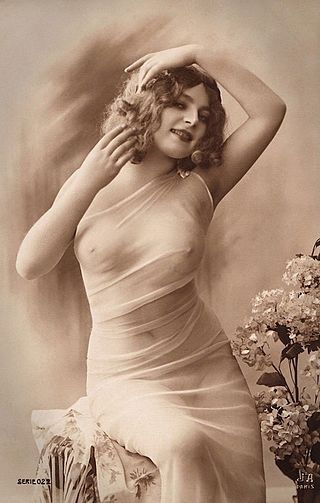
Erotica is literature or art that deals substantively with subject matter that is erotic, sexually stimulating or sexually arousing. Some critics regard pornography as a type of erotica, but many consider it to be different. Erotic art may use any artistic form to depict erotic content, including painting, sculpture, drama, film or music. Erotic literature and erotic photography have become genres in their own right. Erotica also exists in a number of subgenres including gay, lesbian, women's, bondage, monster and tentacle erotica.

A pin-up model is a model whose mass-produced pictures and photographs have wide appeal within the popular culture of a society. Pin-up models are usually glamour models, actresses, and fashion models whose pictures are intended for informal, aesthetic display, such as being pinned onto a wall. Beginning in the 1940s, pictures of pin-up girls were also known as cheesecake in the U.S.

Softcore pornography or softcore porn is commercial still photography, film, or art that has a pornographic or erotic component but is less sexually graphic and intrusive than hardcore pornography, defined by a lack of visual sexual penetration. It typically contains nude or semi-nude actors involved in love scenes and is intended to be sexually arousing and aesthetically beautiful. The distinction between softcore pornography and erotic photography or art, such as Vargas girl pin-ups, is largely a matter of debate.

Erotic art is a broad field of the visual arts that includes any artistic work intended to evoke arousal. It usually depicts human nudity or sexual activity, and has included works in various visual mediums, including drawings, engravings, films, paintings, photographs, and sculptures. Some of the earliest known works of art include erotic themes, which have recurred with varying prominence in different societies throughout history. However, it has also been widely considered taboo, with either social norms or laws restricting its creation, distribution, and possession. This is particularly the case when it is deemed pornographic, immoral, or obscene.

George Brown Petty IV was an American pin-up artist. His pin-up art appeared primarily in Esquire and Fawcett Publications's True but was also in calendars marketed by Esquire, True and Ridgid Tool Company. Petty's Esquire gatefolds originated and popularized the magazine device of centerfold spreads. Reproductions of his work, known as "Petty Girls," were widely rendered by military artists as nose art decorating warplanes during the Second World War, including the Memphis Belle.
SuicideGirls is an online community-based website that revolves around pin-up photography sets of models known as the Suicide Girls.

Francis Meadow (Frank) Sutcliffe was an English pioneering photographic artist whose work presented an enduring record of life in the seaside town of Whitby, England, and surrounding areas, in the late Victorian era and early 20th century. His documentation of the Victorian and Edwardian periods in Whitby, led him to be labelled as the "pictorial Boswell of Whitby.
Erotic photography is a style of art photography of an erotic, sexually suggestive or sexually provocative nature.

Andrew Blake is an American adult erotic film director and film producer. Blake has been inducted into both the AVN and XRCO Halls of Fame and is a medal recipient from the Worldfest-Houston International Film Festival for his first film NIGHT TRIPS.
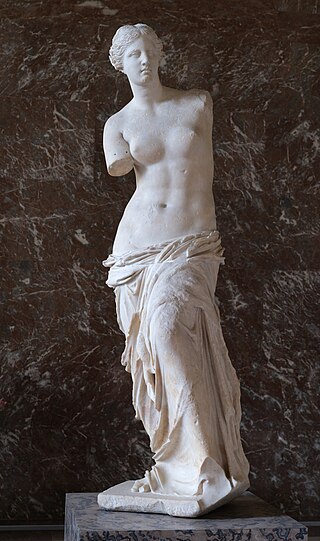
Depictions of nudity include all of the representations or portrayals of the unclothed human body in visual media. In a picture-making civilization, pictorial conventions continually reaffirm what is natural in human appearance, which is part of socialization. In Western societies, the contexts for depictions of nudity include information, art and pornography. Information includes both science and education. Any ambiguous image not easily fitting into one of these categories may be misinterpreted, leading to disputes. The most contentious disputes are between fine art and erotic images, which define the legal distinction of which images are permitted or prohibited.

The history of erotic depictions includes paintings, sculpture, photographs, dramatic arts, music and writings that show scenes of a sexual nature throughout time. They have been created by nearly every civilization, ancient and modern. Early cultures often associated the sexual act with supernatural forces and thus their religion is intertwined with such depictions. In Asian countries such as India, Nepal, Sri Lanka, Japan, Korea, and China, representations of sex and erotic art have specific spiritual meanings within native religions. The ancient Greeks and Romans produced much art and decoration of an erotic nature, much of it integrated with their religious beliefs and cultural practices.

Nude photography is the creation of any photograph which contains an image of a nude or semi-nude person, or an image suggestive of nudity. Nude photography is undertaken for a variety of purposes, including educational uses, commercial applications and artistic creations.
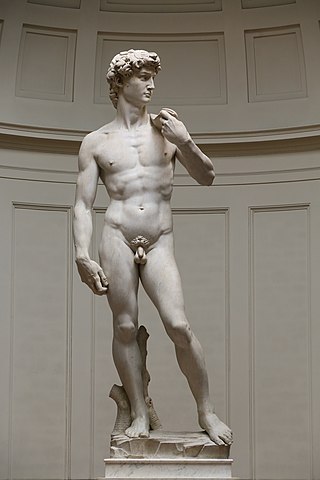
The nude, as a form of visual art that focuses on the unclothed human figure, is an enduring tradition in Western art. It was a preoccupation of Ancient Greek art, and after a semi-dormant period in the Middle Ages returned to a central position with the Renaissance. Unclothed figures often also play a part in other types of art, such as history painting, including allegorical and religious art, portraiture, or the decorative arts. From prehistory to the earliest civilizations, nude female figures were generally understood to be symbols of fertility or well-being.
Graham Stuart Ovenden was an English painter, fine art photographer and writer.
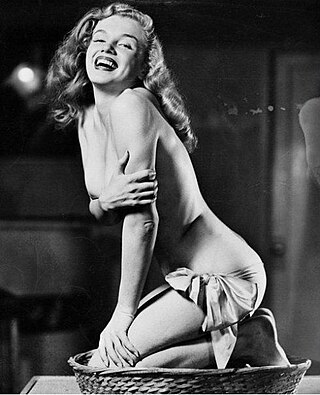
Glamour photography is a genre of photography in which the subjects are portrayed in erotic poses ranging from fully clothed to nude. The term may be a euphemism for erotic photography. For glamour models, body shape and size are directly related to success. This type of photography is also known as "cheesecake" or "pin-up" for women and "beefcake" for men.
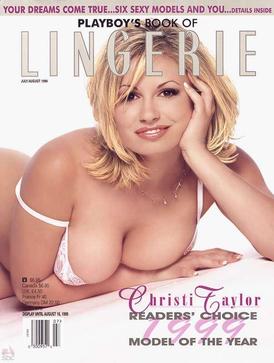
Playboy Special Editions are a spin-off series of Playboy magazine containing glamour and softcore nude photographs. The initially infrequent and later semi-regular editions ran from 1963 through 2000 then re-branded from 2000 through 2012 final issues. A one-off special edition was published in February 2015 featuring images of models in different locations within California from the controversial photographer Terry Richardson.
Goliath Books is a publisher of art and photography books, founded in 1997 by Miki Bunge in New York. Goliath's objective is to publish diverse and daring photography and art books and to introduce controversial, erotic and fringe themes to a mainstream audience. Goliath continues to be noteworthy for their ongoing publication of artists who fall outside traditional practices. The publisher's ongoing mission is to explore and transform the public's approach to art, erotic themes, pornography and perspectives from a range of subcultures.

Fine art nude photography is a genre of fine-art photography which depicts the nude human body with an emphasis on form, composition, emotional content, and other aesthetic qualities. The nude has been a prominent subject of photography since its invention, and played an important role in establishing photography as a fine art medium. The distinction between fine art photography and other subgenres is not absolute, but there are certain defining characteristics.

An erotic photography model or erotic model poses for sensual or erotic photography which is used in exhibitions, art galleries, books, magazines, calendars, as well in other formats, mostly internet, DVDs and magazines. Erotic models pose in an explicit manner, rather than in artistic or implied styles where not everything is shown. The model can pose nude or wear lingerie, swimsuits, etc. No qualifications are required to work as an erotic model beyond being of legal age. The themes used in erotic photoshoots can be diverse, and it is up to the model and photographer to determine what the shoot will entail, so the model has to be aware of their limits.